
PRODUCTION
One of the first things you notice when visiting a palenque/fabrica/vinata (distillery) is that the methods and equipment being used seem almost as prehistoric as the plants themselves. Just as different species of agave have evolved to thrive in different climates, each region has come to utilize its own signature production methods and tools for making what its community has come to look for in a pour of mezcal.
A basic introduction to the process and its variations below:
Agave are among the world’s oldest and most diverse genera of plants. Often mistaken for cacti, to which they are not related; and aloe, to which they are only distantly related, the 200+ species of agave are succulents in the Asparagaceae family of plants, closer relatives to asparagus and artichokes. They are extremely hearty plants, able to survive in a range of climates, and grow extremely slowly, taking between 5-55 years to reach maturity, while yielding as little as 7 liters of finished mezcal per ton of cooked plants.
GROW
2. COOK
After the agaves are harvested, the pencas (leaves) are shaved off with machetes, revealing the piña (body).
A conical pit oven is dug into the ground, and a wood fire is lit in the bottom. When the flames are reduced to barbecue-friendly embers, river rocks are piled on top of the wood, then the piñas, then palm fronds or woven mats, and finally the top is covered with dirt sealed with dirt. Depending on the size of the piñas, the ambient temperature, and other factors, the oven will be left to roast for somewhere between 3 and 10 days, with the piñas soaking up the flavors of the earth and smoke.

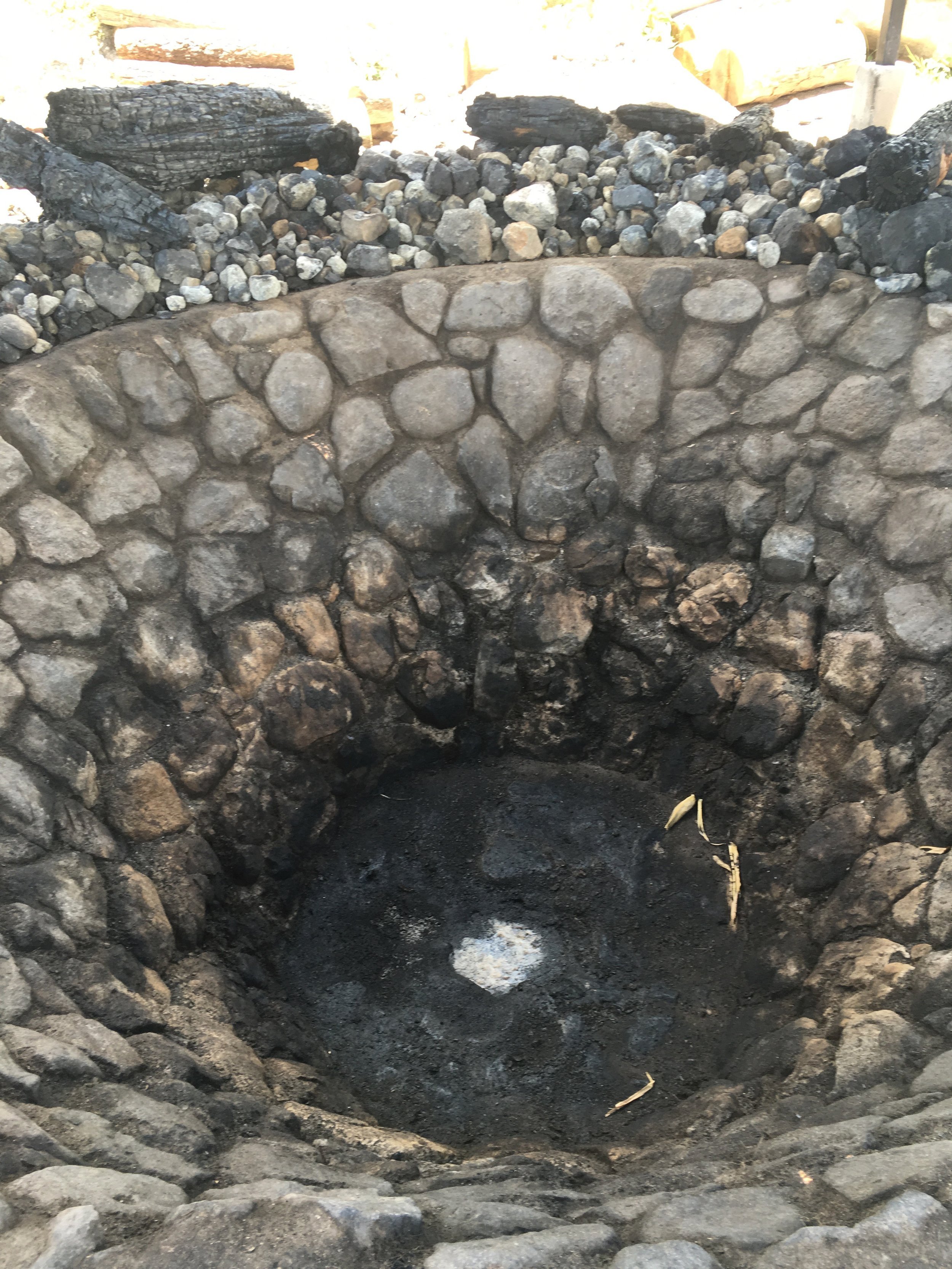

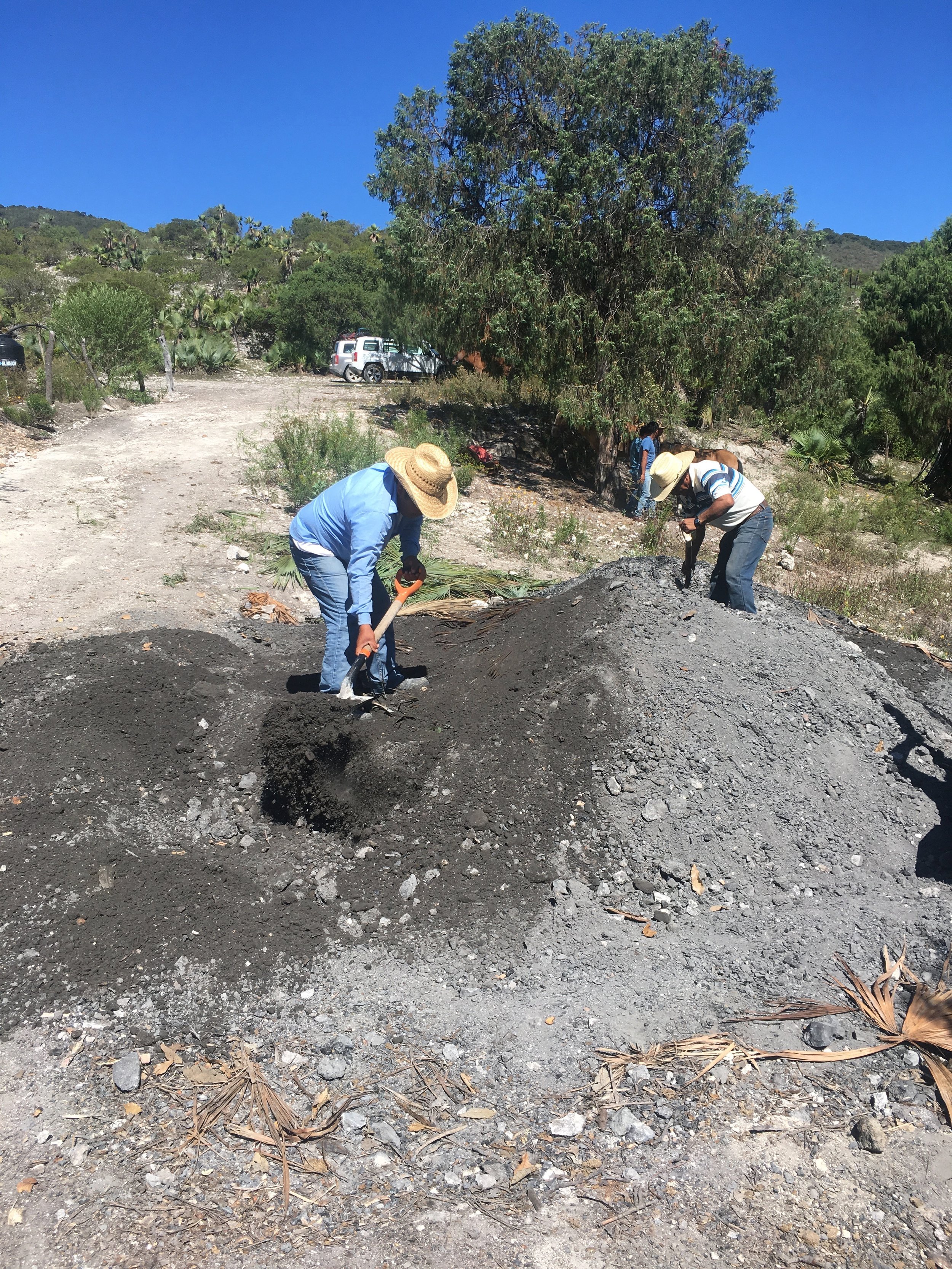

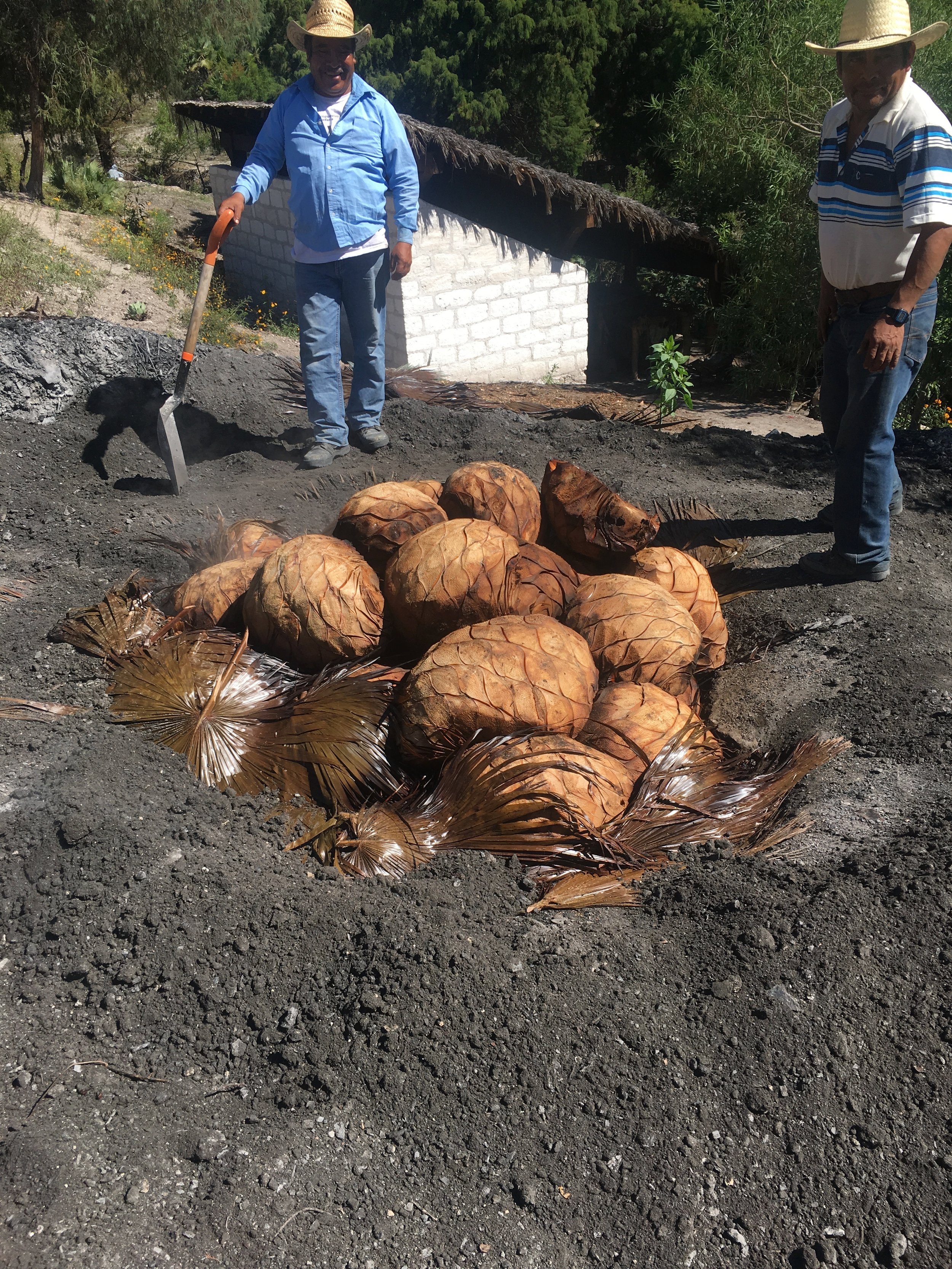
3. mash
After the piñas are unearthed, they’re left to sit and cool for a day or longer depending on the maestro’s preferences. The machetes (the duct tape of rural Mexico) come back out, and the mezcaleros will chop the roasted piñas into smaller pieces that are then mashed using a tahona (giant stone wheel drawn by animals); or by a team of mezcaleros pounding the pieces with giant bats in a canoa (hollowed out tree trunk) or cement trough, or by a wood chipper.
4. ferment
The mashed agave is placed in tinas (open fermentation tanks) and topped with water. Unlike nearly all modern spirits, traditional mezcal is fermented by wild yeast, which can vary from one side of the road to the other, and between seasons – one more way that every batch is unique.
Depending on the type of agave, the climate, and the maestro’s preferences, fermentation can range from a few days up to a full month.






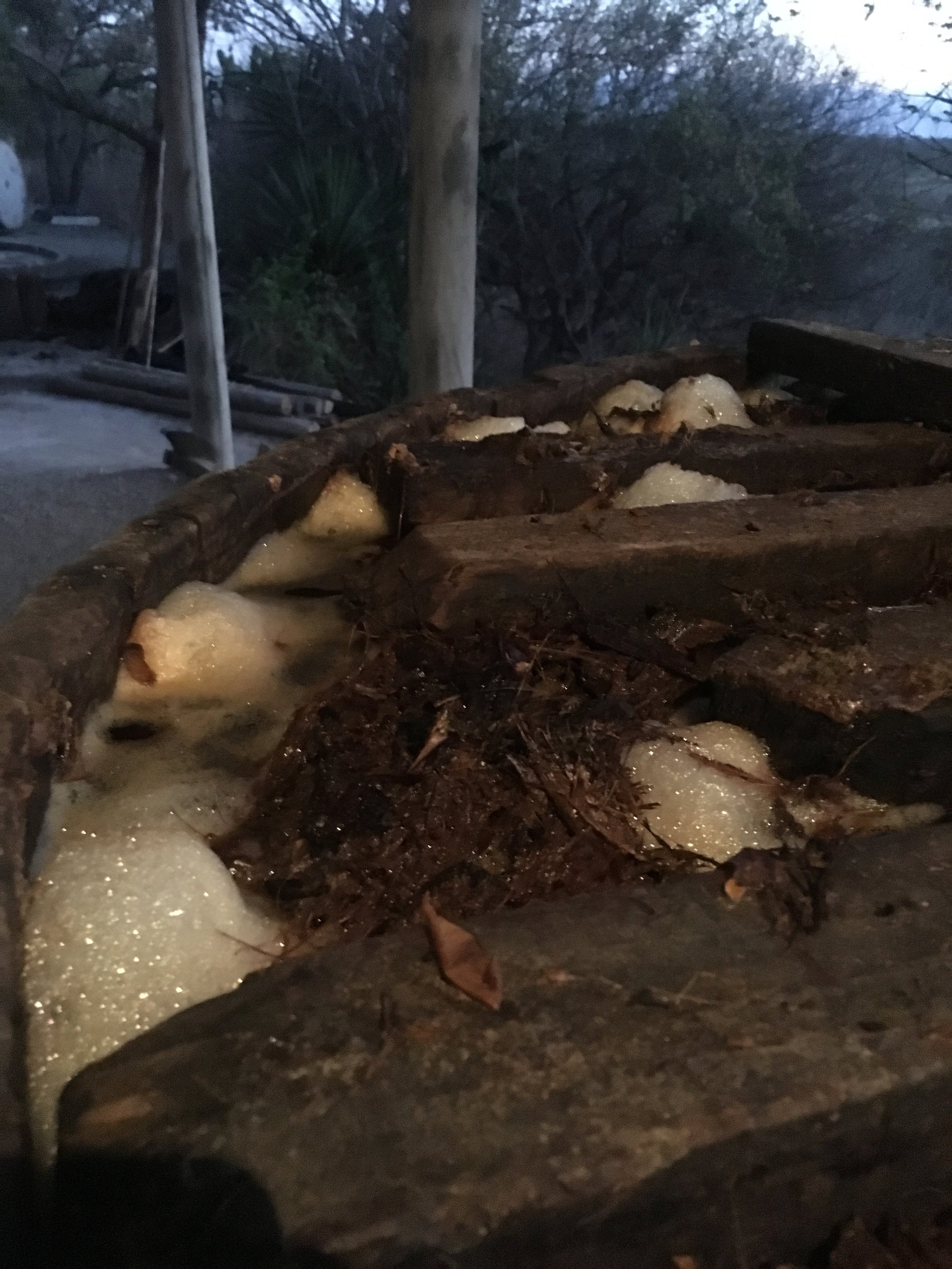

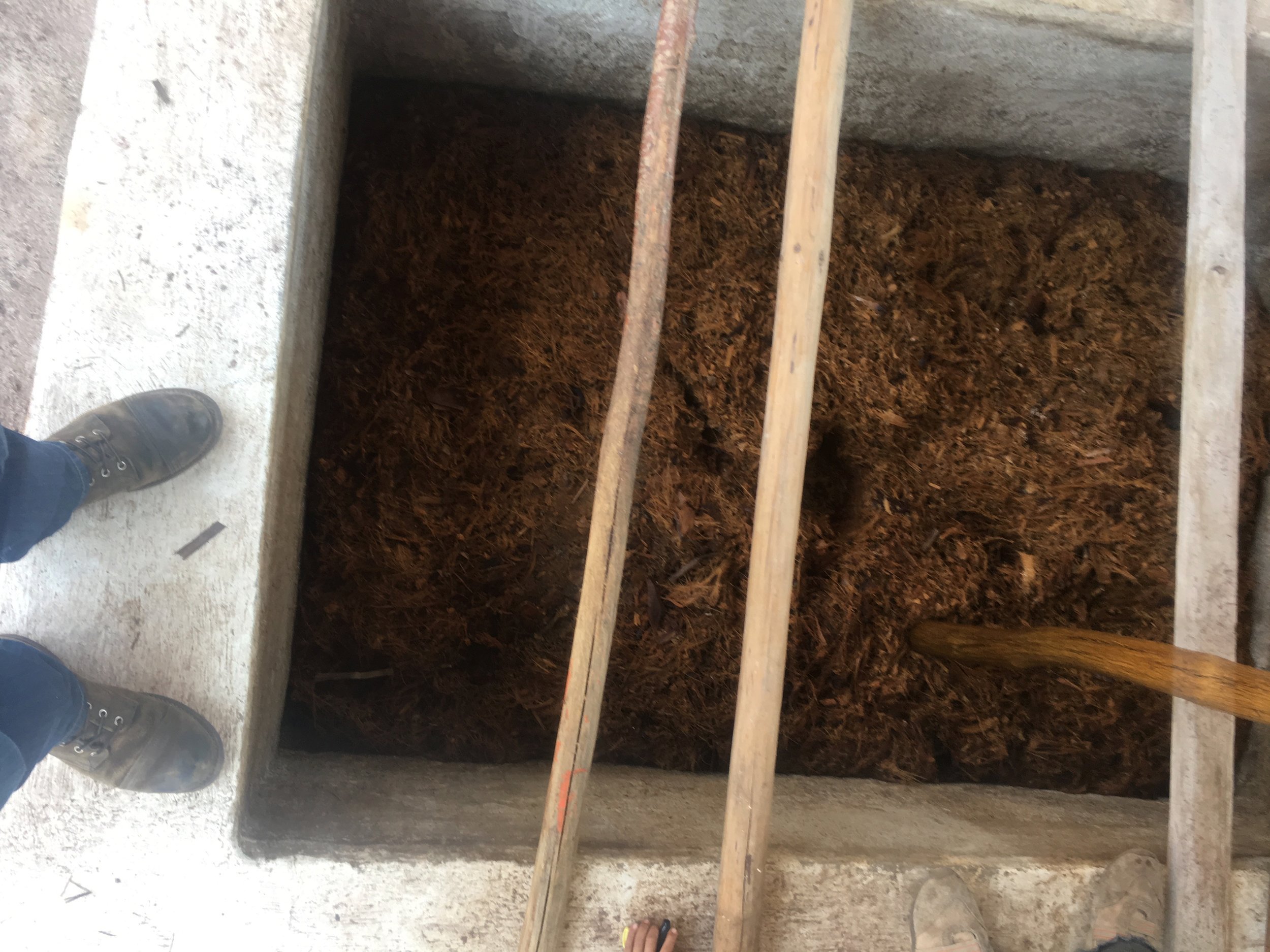
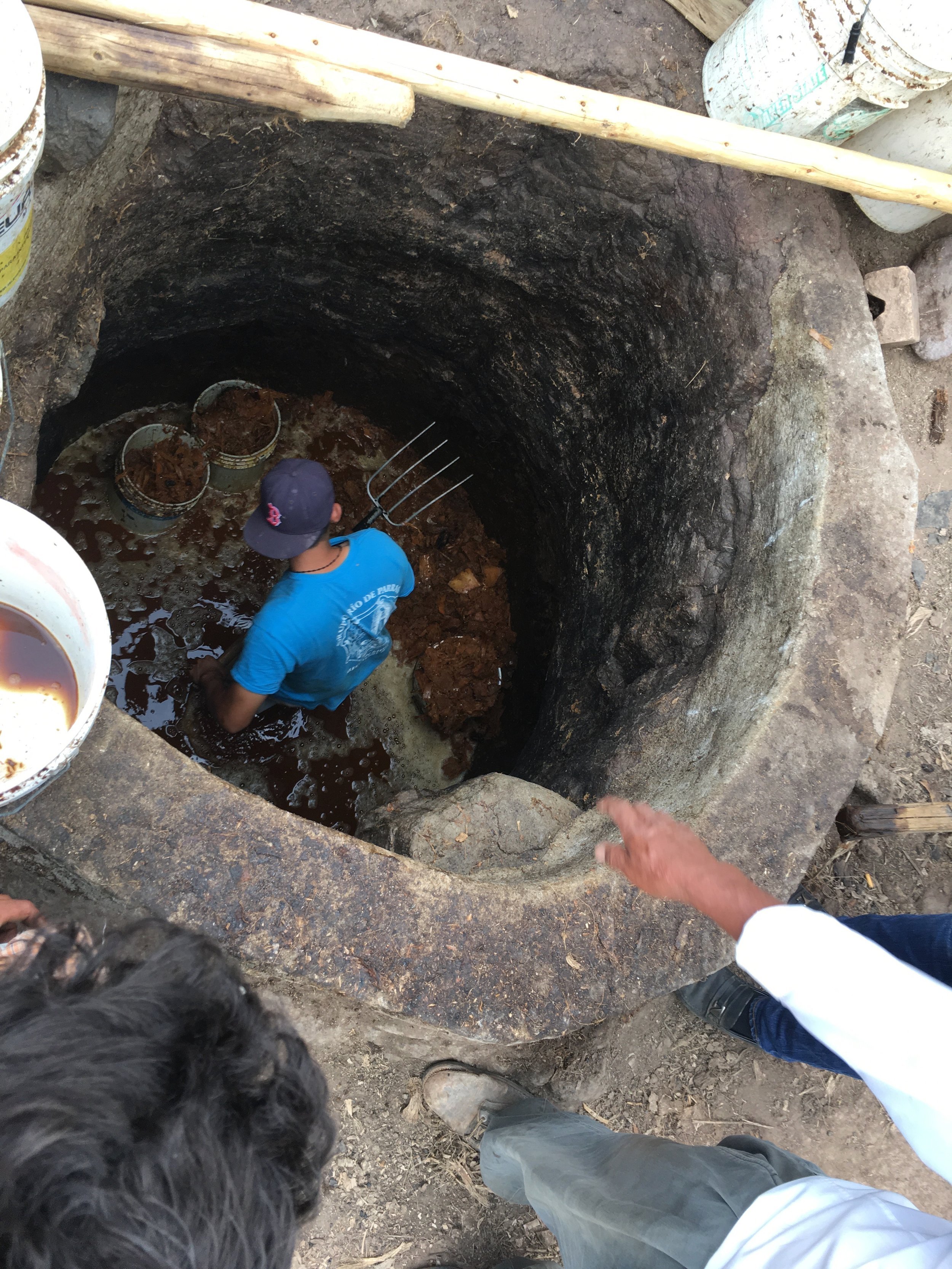
5. distill
With a few exceptions, nearly all traditional mezcales are distilled twice, using only the mezcalero’s senses and experience to regulate the heat of the fire, to separate the puntas, corazones y colas (heads, hearts, and tails), and recombine them for the ideal balance of aromatics, flavor, and ABV.
When it comes to traditional mezcal, there are three basic types of stills used:
Alambiques (alembic stills) are familiar to anyone with a basic knowledge of distillation. A fire heats a large metal pot containing ferment. As alcohol boils off, the vapors go up and across a lyne arm before condensing in water cooled coils. The vast majority of mezcales available in the US are made in alambiques.
Ollas de barro (clay pots) work similarly to alambiques. A large clay pot filled with ferment, is heated from a wood fire below. The alcohol vapors then rise into a second clay chamber, stacked above it before hitting a water-cooled condensing plate and dripping onto a funnel that drains out of the side.
Filipino stills are the most rugged and basic, the kind you would build on a deserted island. The ferment is heated in a metal pot, topped with a wooden chamber similar to a barrel, or even a hollowed-out tree trunk, and capped with a metal or clay condensing plate.














